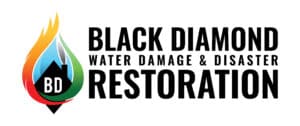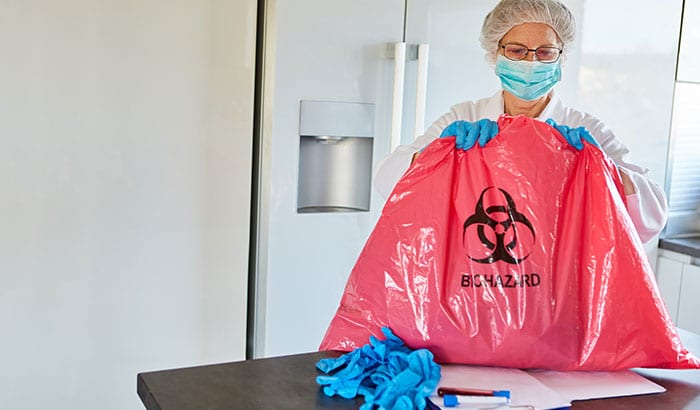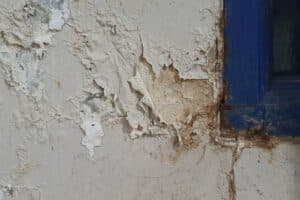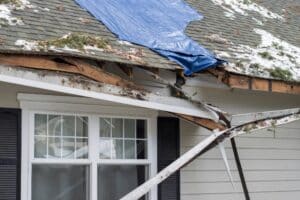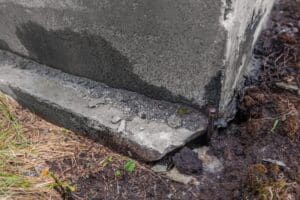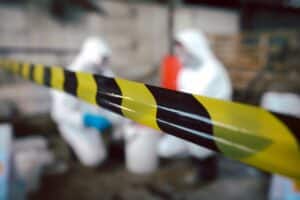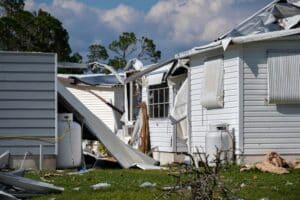Biohazard cleanup is no joke. Many important steps must be taken to ensure that anyone who comes in contact with the damaged area is safe. In this article, we will explain the actions it takes to clean an area with biohazard damage.
But first, let’s take a look at what is considered a biohazard:
Biohazards are any biological materials or substances that pose a potential threat to human health or the environment, including:
- Blood and blood products: Human or animal blood, blood components, and products made from blood, such as plasma, are considered biohazardous because they may contain infectious agents that can cause disease.
- Body fluids: Body fluids such as saliva, semen, vaginal secretions, urine, and feces can carry infectious agents and are considered biohazardous.
- Microorganisms: Bacteria, viruses, fungi, and parasites can all be biohazardous, as they can potentially cause disease in humans or animals.
- Tissues and organs: Human or animal tissues, organs, and body parts can be biohazardous due to their potential to contain infectious agents.
- Laboratory waste: Waste generated from laboratories with biohazardous materials can be biohazardous, including cultures, stocks, and items contaminated with infectious agents.
- Sharps: Needles, scalpels, and other sharp objects used in medical procedures can be biohazardous due to their potential to transmit infectious agents.
- Chemical waste: Chemicals used in the handling, storing, and disposing of biohazardous materials can be hazardous to human health and the environment.
- Genetically modified organisms (GMOs): Modified organisms that have the potential to cause harm to the environment or humans are considered biohazardous.
It’s important to note that not all biological materials or substances are biohazardous. For example, human hair, nails, food, or medical devices not contaminated with infectious agents are not typically considered biohazardous.
Now, on to the cleanup process. Here are 20 steps you can expect during a biohazard cleanup:
- Assessment: A professional biohazard cleanup team will first assess the extent of the contamination and determine what personal protective equipment (PPE) and cleaning supplies will be necessary.
- Isolation: The contaminated area will be isolated to prevent the spread of any infectious agents or biohazardous materials.
- PPE: The biohazard cleanup team will wear appropriate PPE, including gloves, masks, and gowns, to protect themselves from exposure to biohazardous materials.
- Removal of biohazardous materials: Any biohazardous materials, including bodily fluids, tissues, or contaminated items, will be removed from the area and placed in biohazard bags.
- Disinfection: The contaminated area will be disinfected using specialized cleaning agents and equipment to kill any remaining infectious agents.
- Ventilation: The contaminated area will be properly ventilated to remove residual contaminants or odors.
- Air filtration: Air filtration devices may be used to remove any airborne contaminants.
- Testing: The area may be tested to ensure that all biohazardous materials have been properly removed and the place is safe for occupancy.
- Documentation: The cleanup team will document the entire cleanup process, including the extent of the contamination, the methods used for cleanup, and any testing performed.
- Decontamination: The biohazard cleanup team will decontaminate all tools, equipment, and PPE used during the cleanup process.
- Disposal: Any biohazardous materials, including contaminated PPE, cleaning supplies, and other items, will be disposed of in accordance with local, state, and federal regulations.
- Biohazard waste transport: A licensed carrier will transport biohazardous waste to a designated waste facility.
- Ongoing monitoring: The area may be monitored for a period of time to ensure that there is no recurrence of biohazardous contamination.
- Post-cleanup testing: The area may be tested again to confirm that all biohazardous materials have been properly removed.
- Client communication: The cleanup team will communicate with the client throughout the process to provide updates and answer any questions.
- OSHA compliance: The cleanup team will follow all OSHA regulations and guidelines to ensure a safe cleanup process.
- Insurance coordination: The cleanup team may coordinate with the client’s insurance company to ensure that all necessary documentation is provided.
- Restoration: Depending on the extent of the contamination, restoration services may be required to repair or replace damaged materials or structures.
- Certification: The biohazard cleanup team may provide a certificate of completion or clearance to confirm that the area is safe for occupancy.
- Follow-up: The cleanup team may follow up with the client to ensure no ongoing issues or concerns related to the biohazard cleanup.
As we mentioned before, biohazard cleanup is no joke, which is why it is best to leave it to a professional, and here’s why:
- Safety: Biohazards can be extremely dangerous and pose a significant risk to human health. A professional biohazard cleanup team has the knowledge, training, and equipment to safely handle and dispose of these materials.
- Compliance: Federal, state, and local regulations govern the handling, transporting, and disposing of biohazardous materials. A professional biohazard cleanup team is trained in and compliant with these regulations, ensuring the cleanup process is done safely and legally.
- Proper Equipment: Professional biohazard cleanup teams have access to specialized equipment, such as personal protective equipment (PPE), specialized cleaning agents, and air filtration devices, that are necessary to clean up and decontaminate a biohazardous area properly.
- Thoroughness: A professional biohazard cleanup team has the knowledge and experience to thoroughly clean and disinfect the affected area, reducing the risk of future contamination.
- Emotional Support: Emotions can be high in situations involving biohazards, such as crime scenes or accidents. A professional biohazard cleanup team can provide emotional support and guidance during the cleanup process.
- Liability: Biohazard cleanup can be a complex and risky process. By leaving it to a professional team, liability is transferred from the property owner or individual to the professional team in case of any mishaps.
Biohazard cleanup is not a task to be taken lightly. It is important to leave the cleanup to a professional biohazard cleanup team to ensure the safety of everyone involved and to prevent further contamination of the area.
Black Diamond Water Damage & Disaster Restoration
Black Diamond Water Damage & Disaster Restoration has trained professionals that are no strangers to biohazard cleanup. We will make sure that the area is cleaned effectively and safely. If you require biohazard cleanup, call us at (801) 512-4194, and we’ll have your place back to its pre-damaged condition in no time.
toto slot